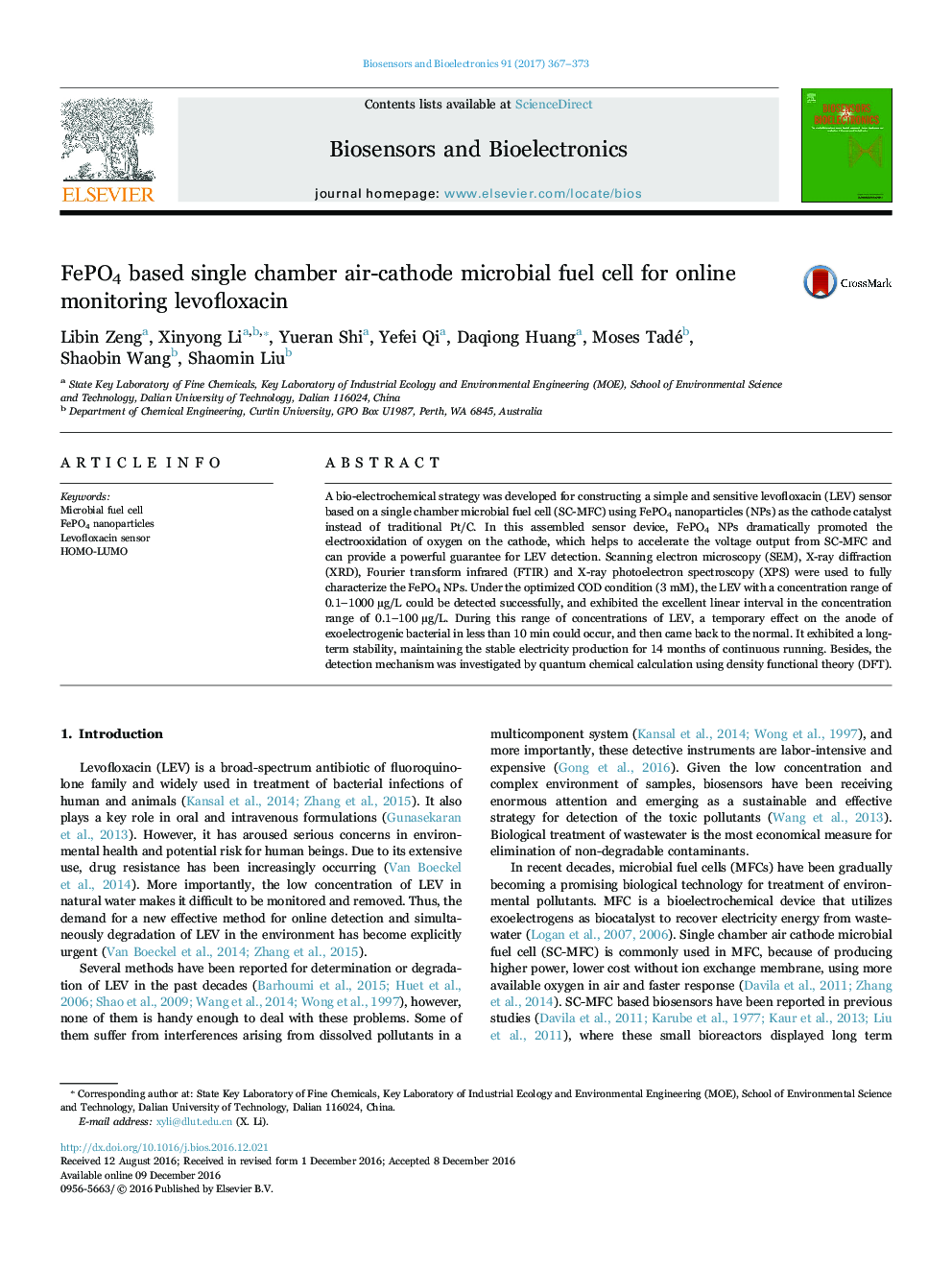| Article ID | Journal | Published Year | Pages | File Type |
|---|---|---|---|---|
| 5031172 | Biosensors and Bioelectronics | 2017 | 7 Pages |
Abstract
A bio-electrochemical strategy was developed for constructing a simple and sensitive levofloxacin (LEV) sensor based on a single chamber microbial fuel cell (SC-MFC) using FePO4 nanoparticles (NPs) as the cathode catalyst instead of traditional Pt/C. In this assembled sensor device, FePO4 NPs dramatically promoted the electrooxidation of oxygen on the cathode, which helps to accelerate the voltage output from SC-MFC and can provide a powerful guarantee for LEV detection. Scanning electron microscopy (SEM), X-ray diffraction (XRD), Fourier transform infrared (FTIR) and X-ray photoelectron spectroscopy (XPS) were used to fully characterize the FePO4 NPs. Under the optimized COD condition (3 mM), the LEV with a concentration range of 0.1-1000 µg/L could be detected successfully, and exhibited the excellent linear interval in the concentration range of 0.1-100 µg/L. During this range of concentrations of LEV, a temporary effect on the anode of exoelectrogenic bacterial in less than 10 min could occur, and then came back to the normal. It exhibited a long-term stability, maintaining the stable electricity production for 14 months of continuous running. Besides, the detection mechanism was investigated by quantum chemical calculation using density functional theory (DFT).
Keywords
Related Topics
Physical Sciences and Engineering
Chemistry
Analytical Chemistry
Authors
Libin Zeng, Xinyong Li, Yueran Shi, Yefei Qi, Daqiong Huang, Moses Tadé, Shaobin Wang, Shaomin Liu,
